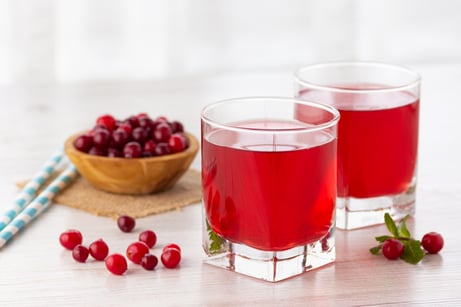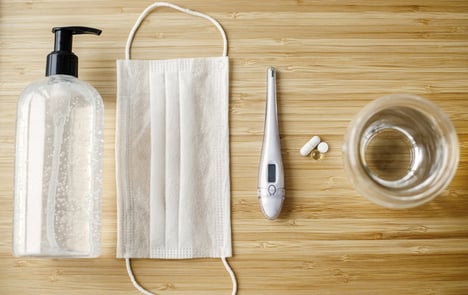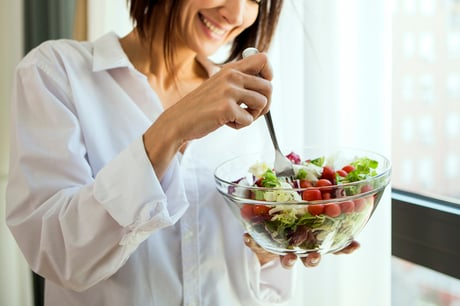 Did you know the human body is composed of about 50 to 60 percent water? Throughout the day, your body uses and loses fluid by way of natural body processes such as sweating, breathing, creating saliva, making and excreting urine, and having bowel movements. Losing more water than you consume can quickly lead to dehydration, which typically presents as excess thirst, headache, dizziness, weakness, digestion problems, and/or nausea. These symptoms typically resolve once you rehydrate your body.
Did you know the human body is composed of about 50 to 60 percent water? Throughout the day, your body uses and loses fluid by way of natural body processes such as sweating, breathing, creating saliva, making and excreting urine, and having bowel movements. Losing more water than you consume can quickly lead to dehydration, which typically presents as excess thirst, headache, dizziness, weakness, digestion problems, and/or nausea. These symptoms typically resolve once you rehydrate your body.
How Much Water Do I Need Each Day?
The amount of water needed each day is different for everyone and varies depending on your age, gender, weight and height, activity level, and health status. For example, women who are pregnant or breastfeeding or those with chronic diarrhea often have increased fluid needs, while some individuals, such as those with kidney disease or congestive heart failure, may need less. Consuming alcohol and caffeine may also increase fluid excretion, thus requiring an increase in fluid intake.
There is no one-size-fits-all approach to hydration because you can achieve normal hydration status with a wide range of total water intake. Total water intake includes plain drinking water, water in beverages, and water that is found in food sources, such as in watermelon or cucumbers. On average, close to 20 percent of total fluid intake comes from food sources.
Instead of an established recommended intake level for water consumption, an Adequate Intake level for total water was set to prevent dehydration and its side effects. The Adequate Intake for total water for adult men and women is 3.7 liters and 2.7 liters each day, respectively. However, water consumption below the adequate intake doesn’t automatically put you at risk for dehydration. A good rule of thumb is to consume HALF of your body weight in OUNCES of water. For example, an individual who weighs 150 pounds should aim to consume 75 ounces of water each day (150 pounds / 2 = 75 ounces).
For more individualized fluid recommendations, please speak to your physician or a registered dietitian (RD/RDN).
How Do I Know If I’m Drinking Enough?
The simplest way to determine your hydration status is by looking at the color of your urine. Pale urine is typically indicative of proper hydration and gets darker the less hydrated you become. It is possible to consume too much water, so if you’re urinating frequently or your urine is clear, you may be drinking too much.
Suggestions for Staying Hydrated
Here are some tips for increasing your fluid intake.
- Purchase a reusable water bottle.
- Opt for water rather than soda and/or sugary drinks.
- Wear clothing that is made of moisture-wicking material and fits loosely, to help you keep cool.
- Bored of water? Add fruit to still or sparkling water. Try out some of these suggestions: Mint, lemon, and strawberry slices; cucumber and melon slices; orange and lime slices; apple slices and cinnamon sticks; cranberry and orange slices; orange slices and cloves; pineapple slices and raspberries.
- Consume foods with a high water content such as watermelon and cantaloupe; strawberries; grapes; lettuce, cabbage and spinach; celery and carrots.
This blog was written by Lindsey Recker, MS, RD, NIFS Registered Dietitian. To learn more about the NIFS bloggers, click here.


 In today’s busy world, it’s easy to put self-care on the back burner. When there are seemingly endless deadlines at work that must be met, household chores to tackle, and a calendar that is jam-packed it can be extremely difficult to even think about taking time out for ourselves. This is why we must take just a few minutes out of our days. And, as Millennial as it may sound, we need to begin to give some love to ourselves so that we not only exist, but live life to the fullest.
In today’s busy world, it’s easy to put self-care on the back burner. When there are seemingly endless deadlines at work that must be met, household chores to tackle, and a calendar that is jam-packed it can be extremely difficult to even think about taking time out for ourselves. This is why we must take just a few minutes out of our days. And, as Millennial as it may sound, we need to begin to give some love to ourselves so that we not only exist, but live life to the fullest. Let’s be real: a health journey is not always linear and not always easy. Sometimes it can be overwhelming and mucky. What do you do? Where do you start? What if you backslid and need to get back on track? There is so much to health, right? If you try to fix it all at once, you might become overwhelmed and at a greater risk of failure.
Let’s be real: a health journey is not always linear and not always easy. Sometimes it can be overwhelming and mucky. What do you do? Where do you start? What if you backslid and need to get back on track? There is so much to health, right? If you try to fix it all at once, you might become overwhelmed and at a greater risk of failure.  Cranberries and cranberry-derived products are commonly used as a remedy for urinary tract infections, especially among women. Cranberries contain proanthocyanidins (PACs), specifically
Cranberries and cranberry-derived products are commonly used as a remedy for urinary tract infections, especially among women. Cranberries contain proanthocyanidins (PACs), specifically 


 Healthcare providers and scientists are all working diligently to find ways to prevent, treat, and cure COVID-19. Many of us are eager for answers and probably getting tired of not knowing what to believe. One of the hot topics floating around is about Vitamin D’s role in preventing COVID-19. Can Vitamin D really protect us against COVID-19 or at least lessen the effects? Let’s take a look.
Healthcare providers and scientists are all working diligently to find ways to prevent, treat, and cure COVID-19. Many of us are eager for answers and probably getting tired of not knowing what to believe. One of the hot topics floating around is about Vitamin D’s role in preventing COVID-19. Can Vitamin D really protect us against COVID-19 or at least lessen the effects? Let’s take a look. Vitamin D Recommendations
Vitamin D Recommendations Come on. We've all heard this before—from friends, from coworkers, and possibly from our own mouths. I swear, salads are easily the most famous “diet food.” Why is that? Do we really have to eat salads to lose weight, clean out our “pipes,” or be healthy? In this blog I break down each of these claims and then talk about ways to improve your veggie game!
Come on. We've all heard this before—from friends, from coworkers, and possibly from our own mouths. I swear, salads are easily the most famous “diet food.” Why is that? Do we really have to eat salads to lose weight, clean out our “pipes,” or be healthy? In this blog I break down each of these claims and then talk about ways to improve your veggie game! As winter approaches, don’t let it discourage you from reaching your full potential and goals you’ve set for yourself. Continue to use exercise and strength training to keep your body healthy.
As winter approaches, don’t let it discourage you from reaching your full potential and goals you’ve set for yourself. Continue to use exercise and strength training to keep your body healthy.  There’s always an assumption that fitness professionals work out 2 hours a day, 7 days a week. They eat healthy all day long and never have any junk food. Basically people think that we are perfect and never make mistakes. I have been in the health and fitness industry for more than 10 years now and I can honestly say that couldn’t be further from the truth.
There’s always an assumption that fitness professionals work out 2 hours a day, 7 days a week. They eat healthy all day long and never have any junk food. Basically people think that we are perfect and never make mistakes. I have been in the health and fitness industry for more than 10 years now and I can honestly say that couldn’t be further from the truth. Coenzyme Q10, also known as ubiquinone, is a commonly used supplement by those with cardiovascular risks and disease, and especially those using statins. CoQ10 acts as a carrier in our cells to assist in
Coenzyme Q10, also known as ubiquinone, is a commonly used supplement by those with cardiovascular risks and disease, and especially those using statins. CoQ10 acts as a carrier in our cells to assist in